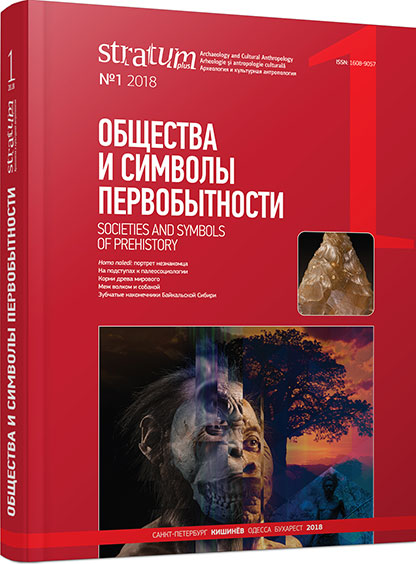Взаимоотношения волка и человека в арктической Сибири 30 000 лет назад по материалам Янской палеолитической стоянки: ранняя стадия одомашнивания
Predomestication and Wolf-Human Relationships in the Arctic Siberia of 30,000 Years Ago: Evidence from the Yana Palaeolithic Site
Author(s): Pavel A. Nikolskiy, Marina V. Sotnikova, Aleksandr A. Nikol’skii, Vladimir V. PitulkoSubject(s): History, Archaeology
Published by: Издательский дом Stratum, Университет «Высшая антропологическая школа»
Keywords: Arctic Siberia; Yana site; Palaeolithic; wolf; dog; domestication; behavior; commensalism; neoteny; totemism
Summary/Abstract: To study the early stages of wolf domestication, we investigated the remains of large canids from the Yana site. Morphologically they cannot be called dogs, but there are certain indicators of the wolves’ relationship with people, favorable to the start of domestication. The sample is dominated by animals with worn, partially missing teeth and various bone pathologies. Often these animals are medium-sized. One skull of a nearly adult individual demonstrates juvenile characteristics. The morphologic and morphometric anomalies observed can be explained by commensalism (deficient and young animals using the resources of human settlement as an alternative food source). On the other hand, pathologies could have been an indirect result of commensalism, rather than its cause. Due to the risk of conflict with humans, only the most tolerant animals could live near their settlement. Experiments with living animals show, that tolerance comes at the cost of accumulating morphologic pathologies, genetically associated with tolerance, which was observed in many Yana wolves.High sociality and vocal behavior allowed wolves to approach human settlements, becoming some of the earliest domesticated animals. The site yielded evidence of a special attitude towards wolves, perhaps indicating a totemic cult. The Yana site material, interpreted in light of the biological characteristics of wolves, demonstrates for the first time the earliest stages of domestication, which can be characterized as self-domestication.
Journal: Stratum plus. Археология и культурная антропология
- Issue Year: 2018
- Issue No: 1
- Page Range: 231-262
- Page Count: 32
- Language: Russian
- Content File-PDF

